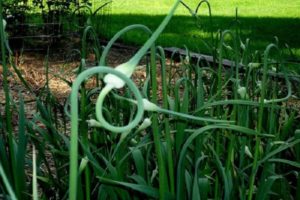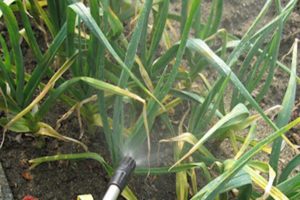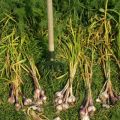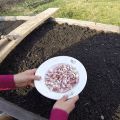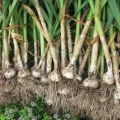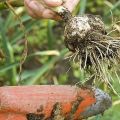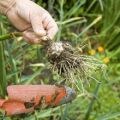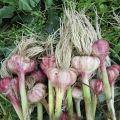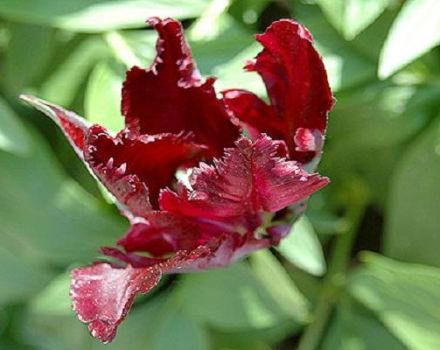When is it necessary to dig up winter garlic in the Leningrad Region?
Garlic is a frequent visitor to summer cottages, and more often the culture is planted for the winter. Harvesting garlic depends on the timing of planting the culture and the region of residence. Properly harvested garlic is stored for a long time and does not deteriorate. Until the onset of spring, it will be as tasty as after harvest.
When to plant winter garlic?
Planting garlic in autumn has more benefits than planting in summer. A good harvest also grows in summer, but it is the bulbs planted in winter that grow large and fragrant. In spring garlic, the cloves are small and arranged in a chaotic manner.
Before we start preparing the beds and planting garlic for the winter, we decide on the planting site. Better if the garlic bed will be located in the place of potatoes, legumes, cauliflower, lettuce, pumpkin and eggplant. It is not recommended to plant garlic after tomatoes and onions.
Prepare the soil 2 months before planting winter garlic. Humus, manure, liquid mullein and superphosphate are introduced into the soil. It is undesirable to use saltpeter for dressing. It is only suitable for spring plantings.
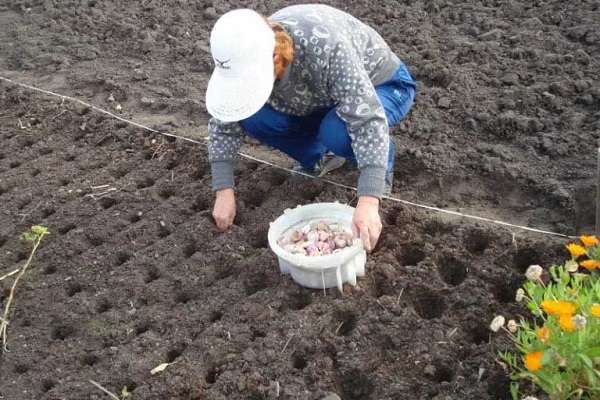
Planting begins in late October - early November. It is best to navigate by the region of residence and climatic conditions. If the weather is warm at the end of October, then the planting is postponed to a later date. Determining the planting time is easy from the soil temperature. It should be warmed up by less than 12 degrees.
Proper care and cultivation features
Observing the rules of agricultural technology, it will turn out to grow a rich harvest. Before winter, it is better to plant only winter-hardy varieties. For example, Alkor, Novosibirsk, Podmoskovny, Lyubasha or Dobrynya. Winter beds must be covered so that the frost does not spoil the bulbs.
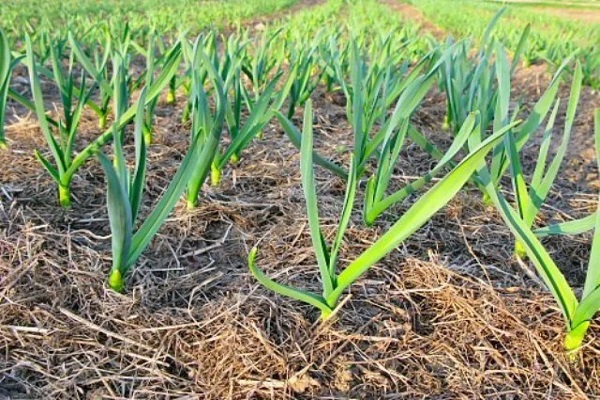
Before planting, the denticles are divided into separate parts no earlier than 1-2 days. Previously, it is not advisable to peel the onion. The cloves need to dry well within 2–3 weeks. If the bulb is poorly dried, then there is a high risk that the plants will suffer from fungal diseases.
The cloves must be disinfected 1-2 days before planting in open ground. To do this, you should prepare a solution of potassium permanganate or drugs such as Tiram or Maxim. Soak the garlic for about 1 hour.
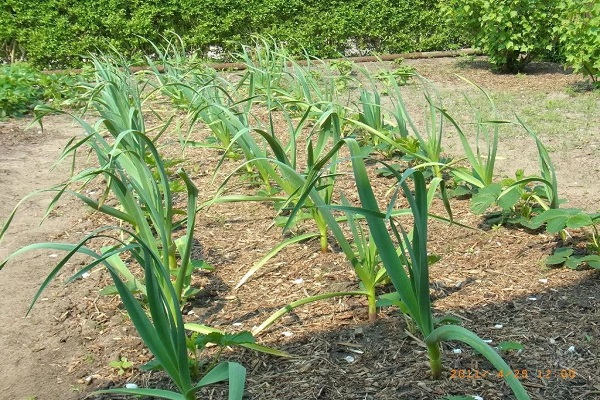
The soil is prepared in advance. The earth is dug up, all weeds are removed and fertilizers are applied. If the soil is too poor, then you need to make top dressing several months before planting. Light loamy or medium loamy soils are best suited for cultivation.
Peat and fresh manure are not suitable as top dressings. If you add these fertilizer then garlic will actively grow deciduous mass, and the fruits will be small.
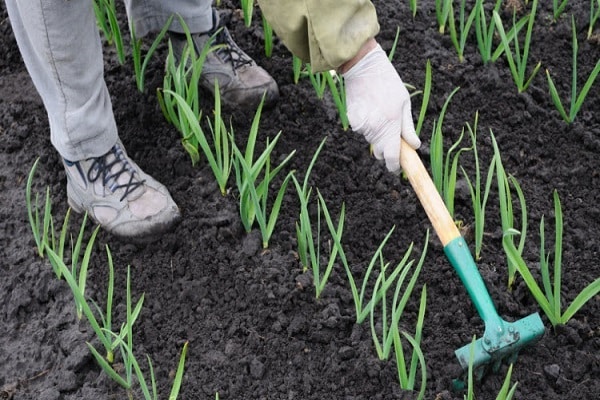
It is not recommended to grow the plant on acidic soils. The garlic will begin to turn yellow quickly, and underdeveloped and small heads will form. Lime, dolomite flour or fluff are used to deoxidize the soil. The action of these substances does not start immediately. We'll have to wait a couple of years for the soil to become acidic. It is important not to forget that lime helps to wash out potassium from the soil, so potash fertilizers are regularly applied.
In the spring, when all the snow has melted, you need to start caring for the garlic. First of all, remove the shelter that protected the sprouts from winter frosts. It is recommended to remove it in the morning, so that the frost "froze" the soil and a crust forms on it. Several times a week, the beds are loosened, watered and weeds removed. You can not do without dressing.
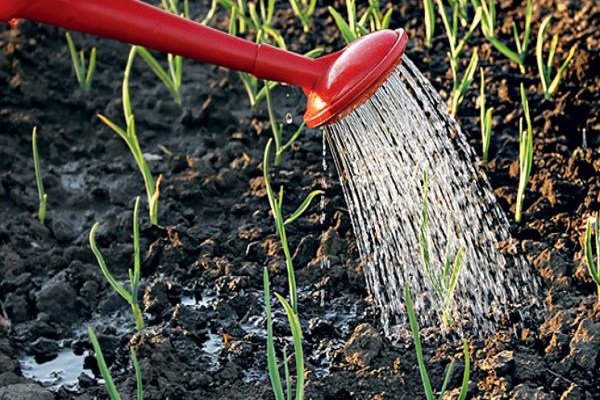
Loosening is carried out after each rain to a depth of 2–4 cm. It is important not to damage the bulbs at this moment. Each subsequent loosening is carried out 1 cm deeper than the previous one. The formation depth of the bulbs is 10–14 cm.
Water the garlic beds rarely. This plant is drought-resistant. But if the garlic does not receive moisture, then the heads will be small and dry. Watering should be moderate. If the spring is dry, then their number is increased. In moderate heat, 2-3 waterings are needed per week. In extreme heat, you will have to water the beds every other day.

A favorable time is evening after sunset. If you water when the sun's rays are very bright, then the stems will get burned, and the plants themselves, along with the fruits, die. Watering in the early morning is not advisable, especially in summer.
When to dig up garlic?
There are two types of crops, depending on the timing of planting. These are spring (which is planted in summer) and winter (planting occurs in late autumn).
As a rule, winter garlic harvesting in the Leningrad region falls on the end of August - beginning of September. To understand what plants need to be collected, you just need to look at the bushes.
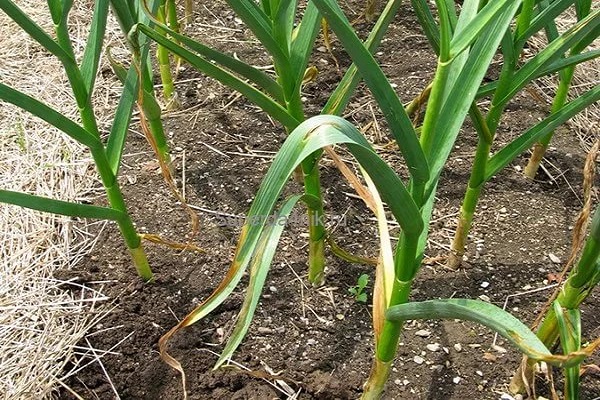
Signs of the maturity of garlic are:
- The peel at the inflorescences begins to crack.
- The leaves turn yellow.
- The stems become very soft.
- The husk of the underground part of the garlic has become dry and separates well from the fruit.
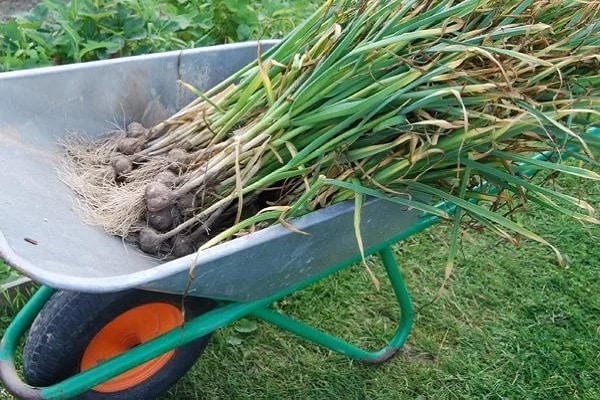
The presence of all these signs indicates that the timing of harvesting garlic in the Leningrad region has come. After the signs of maturity are clearly visible, it is not recommended to delay cleaning. Of course, you can eat the fruits, but they will already be tasteless and will not be able to preserve nutrients. In overripe heads, the husks quickly crumble, and the cloves themselves do not adhere well to the peduncle.
Collection is carried out only in dry, sunny weather. It is desirable that the ground be dry at this point. You need to harvest winter garlic before the onset of prolonged rains.
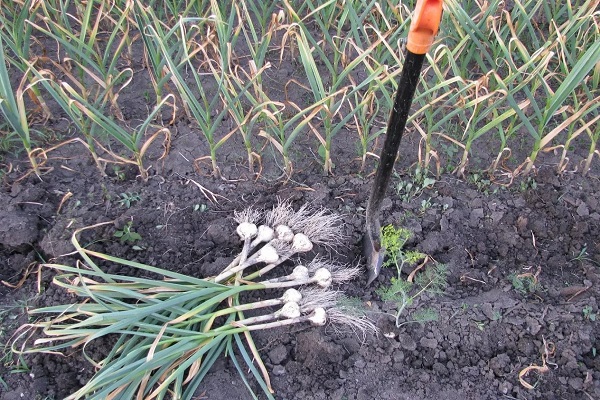
The second important point is dig up the garlic correctly... If the plant grows on light soils, then it just needs to be pulled out. And if the heads are firmly held in the ground, then it is better to use a shovel.
After the bulbs have been removed from the ground, they must be peeled off the ground with your hands. It is not recommended to knock them against each other so as not to damage the fruits.
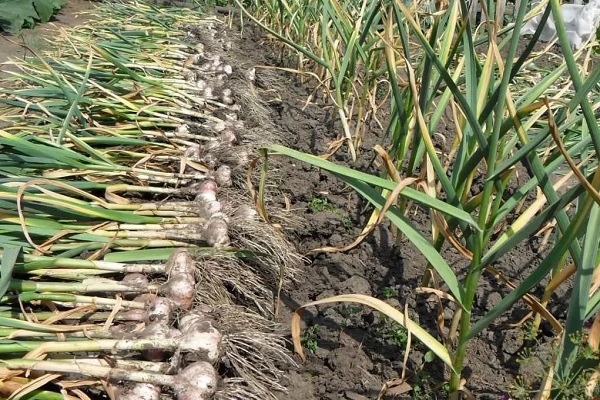
When to harvest spring garlic?
The harvesting time of spring garlic in the Leningrad region practically does not differ from the winter one. To understand that the time has come for collection can be understood by the same signs that were given earlier.
The best time for harvesting is the end of September. Provided that the weather is warm and dry throughout September. The difference between harvesting winter and spring garlic is 3-4 weeks. Pull the garlic out with your hands. If it doesn't work, you need to dig it.

When to harvest garlic and how to store it properly?
To preserve all the beneficial qualities of garlic, it is not enough just to collect it in due time and prevent the bulbs from overripe.The storage conditions of the culture after harvest are also important.
The harvested garlic will last winter and spring if conditions are met. The shelf life of the dug garlic depends only on the quality of the storage conditions.
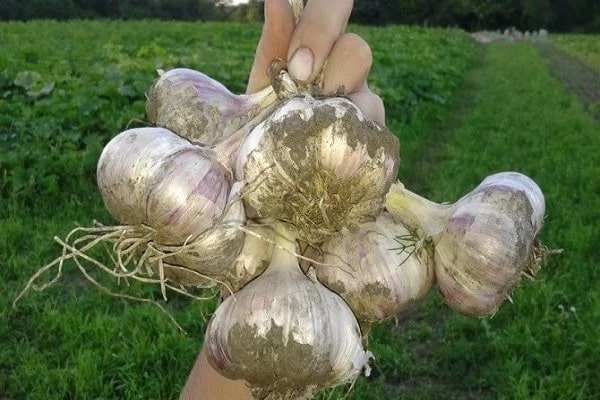
The bushes are gently pulled out of the soil. If necessary, take a shovel to avoid damaging the bulbs. After that, they are laid out on the garden bed so that the cloves dry out in the sun. Every day you need to watch the weather forecast, and if it rains in the coming days, the plants are transferred to a closed room.
When the fruits dry out, the stems are cut off and sorted into three categories - for storage, for eating and for planting.
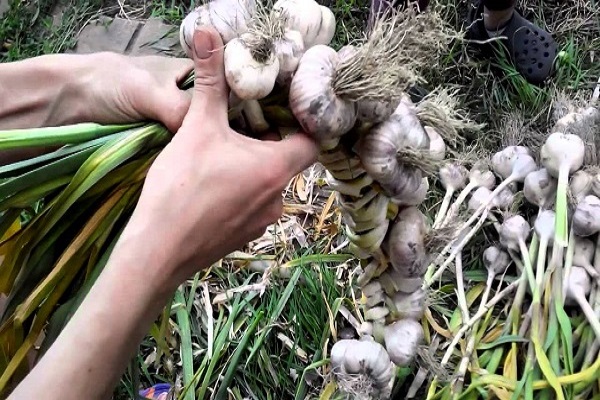
The largest and healthiest bulbs are left for planting for the winter. There are not many such bulbs. For storage, the remaining good fruits are selected without damage. And for consumption, damaged and small heads are used. Such bulbs will still not be able to be stored for a long time and should be eaten in the first place.
The bulbs are stored in boxes with openings for air circulation. The air temperature in the premises with the harvest should not be too high, but also not approach minus values.
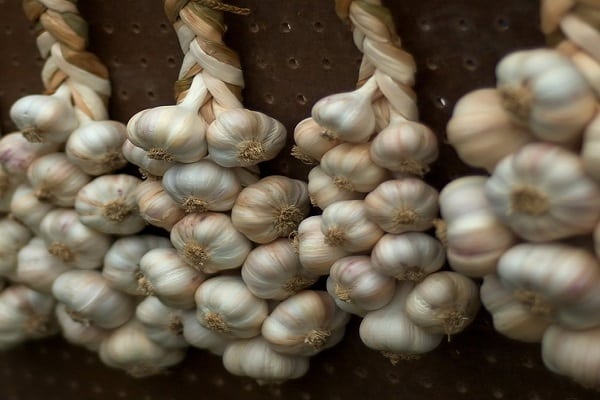
After harvesting and sorting the crop, the bulbs are sorted several times before they run out. The point is that during storage bulbs begin to rot or become moldy. And from this a fungus appears. To prevent fungi from destroying the harvested crop, damaged bulbs must be thrown out in time.

